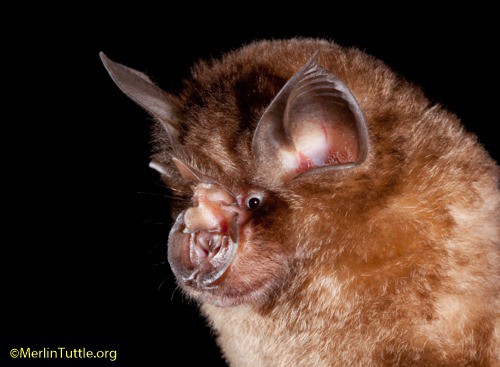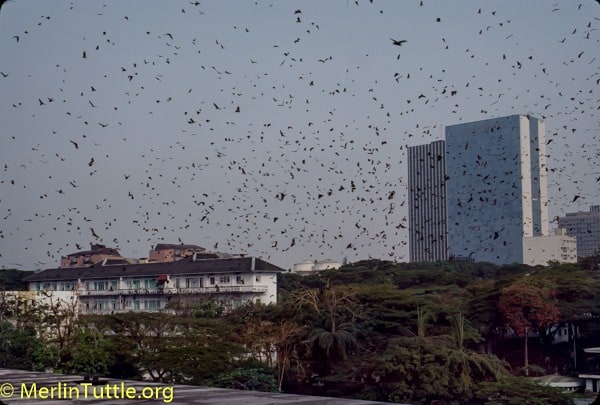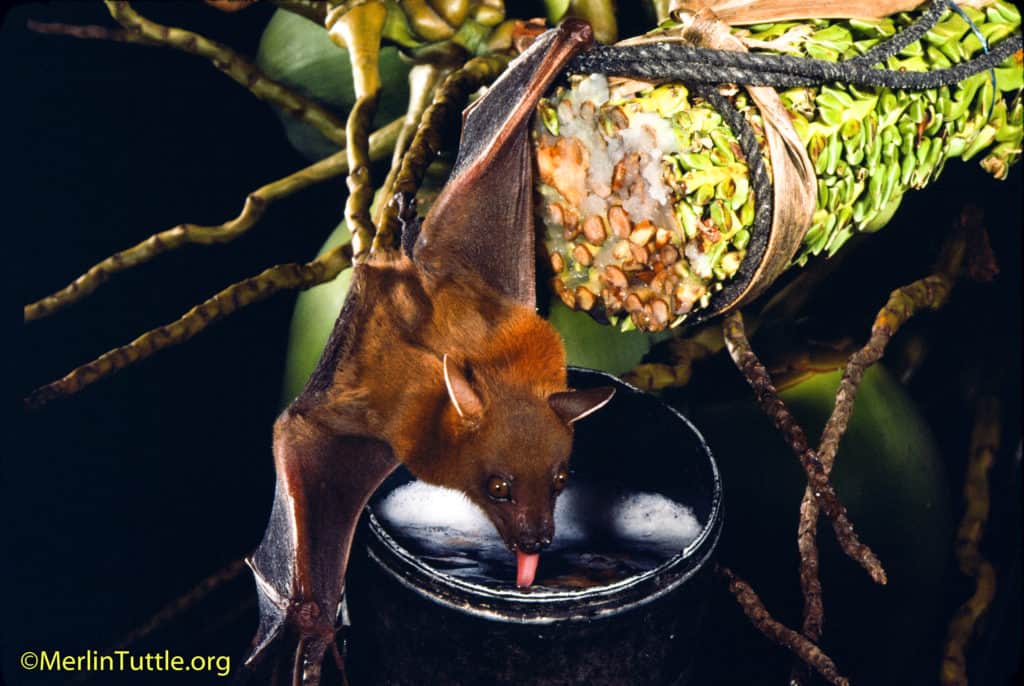The Costs of Bat Decline
Can we afford to lose bats? A recent study by Eyal Frank of the University of Chicago reveals that the dramatic decline in U.S. bat
A reminder that our members DO make a difference! Leading news media outlets are changing tack, publishing more positive, and fewer negative, stories about bats as a direct result of MTBC members’ ongoing support and actions.
Your vigilance brings misleading articles to our attention. Your support enables us to carefully document and explain issues of concern. Your personal, diplomatic comments to editors influence their further actions. Media portrayal of bats cannot be ignored. It is key to broad public understanding and support, without which conservation progress could prove impossible.

Since 2014, we’ve prepared and distributed 15 blog posts and 18 Bat Flashes providing counterpoint documentation in response to exaggerated, misleading, and often completely wrong speculation attempting to link bats to rare, but scary diseases. Widely distributed publications included “Give Bats a Break” in Issues in Science and Technology (subsequently translated into French and Chinese), “Fear of Bats and its Consequences” in the Journal of Bat Research and Conservation, and “Humans Shouldn’t Be So Scared of Bats” in Slate. Additionally, the science journal, Nature, published a co-authored response in its correspondence section, titled “Don’t misrepresent link between bats and SARS.”
Illustrating our combined impact, New Scientist, on February 8, 2014, published one of the worst bat disease articles ever. It was titled “Reservoir bats: “Spreading contagion on night’s wings” with the following subheading, “Hordes of deadly diseases are lurking in bats and sometimes jumping to people. Can we prevent a major pandemic?”
Following our diplomatic Bat Flash response, New Scientist published more than 20 consecutively positive stories about bats! They even reviewed my book, “The Secret Lives of Bats,” with high praise.
Of those we have contacted, several leading publishers have become strong advocates for putting bat disease speculation in perspective. And with their help we’re reaching millions of people worldwide.
When Zeit Online published an article (2018) with a subheading titled, “No animal distributes more nasty, dangerous-to-humans pathogens than the bat,” my diplomatic complaint was published as an op-ed under the following title and subheading: “Stop Publishing Fake News About Bats. Yes, bats can transmit diseases—but you are extremely unlikely to be infected by one. Why fake news about bats is dangerous to their survival.”

When TheScientist published an article (2019) claiming that “Studying the genetic diversity and geographic distribution of bat-borne filoviruses is very important for risk assessment and outbreak prevention,” we provided a counterpoint response. It was published as an op-ed, titled “Opinion: Disease Prediction by Bat Virus Surveys is a Waste.”
Mongabay, a leader in conservation advocacy, annually reaches a readership of 28 million in nine languages. On April 27, 2016, they ran an article clearly intended to support bat conservation. However, the author was misled by prematurely published speculation linking bats to SARS and Ebola. We issued a Bat Flash, asking our members to politely call it to their editor’s attention. Mongabay’s editor investigated and agreed that disease threats had been overstated. They responded, “We have posted a corrected version to the story with a note acknowledging your role in bringing the error to light.”

In 2017 and 2018, while other media featured scary headlines and speculated that Nipah virus from fruit bats might spread to become a pandemic, Mongabay published a responsible headline, “Nipah infection in Kerala: Don’t blame the bats alone; improve public health.” Their report put the rare disease in perspective and cautioned against harming bats.
Last week, the editor of Science News agreed to change the title of their June 12 article, originally titled “Bats beat out dogs as the main cause of rabies deaths in the U.S.” After hearing from us, the editor changed the title to “Bats are the main cause of rare rabies deaths in the U.S.” It’s only a small victory, but we’ve sent a thank you, and now that they’ve been alerted, they’ll likely be tougher on misleading submissions in the future.
Vigilance and persistence are slowly but surely paying big dividends for bats. More and more editors, even virologists and epidemiologists, are beginning to question whether virus hunter claims that the billions of dollars spent on bat-centered virus searches are a wise investment in protecting public health.
Thank you, Bat Fans, for responding to Bat Flashes. Together we are making a difference!
Love our content? Support us by sharing it!
Can we afford to lose bats? A recent study by Eyal Frank of the University of Chicago reveals that the dramatic decline in U.S. bat
Bats are among the most fascinating yet misunderstood creatures in the natural world, and for many conservationists, a single experience can ignite a lifelong passion
Many bat conservationists know that Kasanka National Park in Zambia is an exceptional place for bats, but it is also the place that sparked my
The Kasanka Trust is a non-profit charitable institution, which secures the future of biodiversity in Kasanka National Park in Zambia. They welcome internships for students
2024 © Merlin Tuttle’s Bat Conservation. All rights reserved.
Madelline Mathis has a degree in environmental studies from Rollins College and a passion for wildlife conservation. She is an outstanding nature photographer who has worked extensively with Merlin and other MTBC staff studying and photographing bats in Mozambique, Cuba, Costa Rica, and Texas. Following college graduation, she was employed as an environmental specialist for the Florida Department of Environmental Protection. She subsequently founded the Florida chapter of the International DarkSky Association and currently serves on the board of DarkSky Texas. She also serves on the board of Houston Wilderness and was appointed to the Austin Water Resource Community Planning Task Force.
Michael Lazari Karapetian has over twenty years of investment management experience. He has a degree in business management, is a certified NBA agent, and gained early experience as a money manager for the Bank of America where he established model portfolios for high-net-worth clients. In 2003 he founded Lazari Capital Management, Inc. and Lazari Asset Management, Inc. He is President and CIO of both and manages over a half a billion in assets. In his personal time he champions philanthropic causes. He serves on the board of Moravian College and has a strong affinity for wildlife, both funding and volunteering on behalf of endangered species.